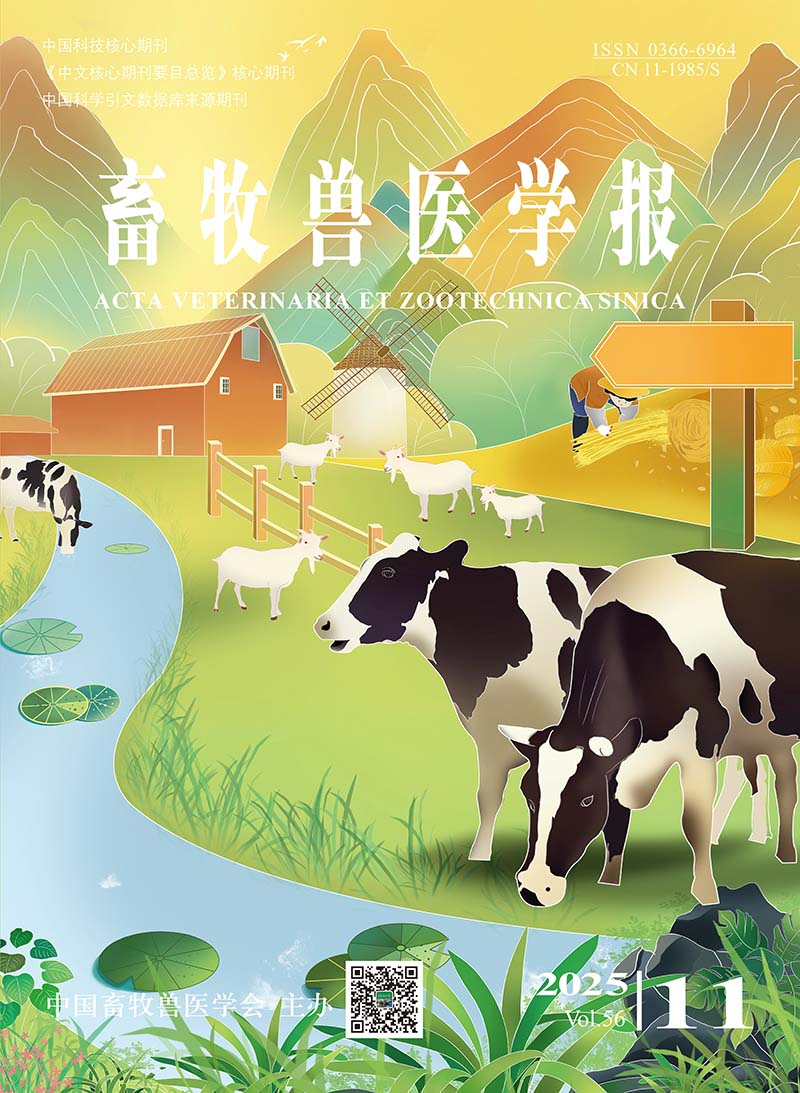-
Antibacterial Drug Resistance Analysis of Klebsiella pneumoniae Isolated from Slaughterhouse
- ZHAO Feifei, LI Jie, HAN Ning, XIE Shiting, ZENG Zhenling
-
2023, 54(7):
3044-3053.
doi:10.11843/j.issn.0366-6964.2023.07.035
-
 Abstract
(
347 )
Abstract
(
347 )
 HTML( )
HTML( )
 PDF (2578KB)
(
434
)
PDF (2578KB)
(
434
)
-
References |
Related Articles |
Metrics
To investigate the drug resistance and virulence gene carrying of Klebsiella pneumoniae isolates, sampling investigation and drug resistance analysis were carried out in a slaughterhouse in Guangzhou. Klebsiella pneumoniae was isolated and identified from pig lung samples, and six common capsular serotypes (K1, K2, K5, K20, K54, K57) were identified, and the minimum inhibitory concentration (MIC) of 13 commonly used antibiotics was detected by the agar dilution method. The resistance genes (blaKPC-2, blaNDM-1, blaNDM-5, blaCTX-M1, tetA, tetB, sul1, sul2, oqxA, qnrB, aac(6')-Ib-cr) and virulence genes (rmpA, entB, iucA, iroN, ycfM, fimH, mrkD, wabG) were detected by PCR. The results showed that 116 strains of Klebsiella pneumoniae were successfully isolated and identified from 150 pig lung samples, the isolation rate was 77.3%. The bacteria showed red short rod shape by Gram staining microscopy, and serotype of capsule was mainly K57 (50.9%). The results of drug sensitivity test showed that most of the isolates showed multi-drug resistance phenotype, and were highly resistant to tetracycline, β-lactam and sulfonamides, and sensitive to meropenem, colistin and enrofloxacin. The detection of drug resistance genes showed that the highest detection rate was sul2 gene (60.3%) and oqxA gene (59.5%), and the lowest detection rates were blaNDM-1 and blaNDM-5 genes (both 0.9%). The virulence gene detection showed that the highest positive rate was ycfM gene (87.1%), and the lowest positive rate was iroN gene (1.7%). The results showed that the detection rate of Klebsiella pneumoniae isolated from slaughterhouse was high, the situation of multiple drug resistance was severe, and the resistance genes and virulence genes were abundant, providing reference for the prevention and control of swine Klebsiella pneumoniae.






